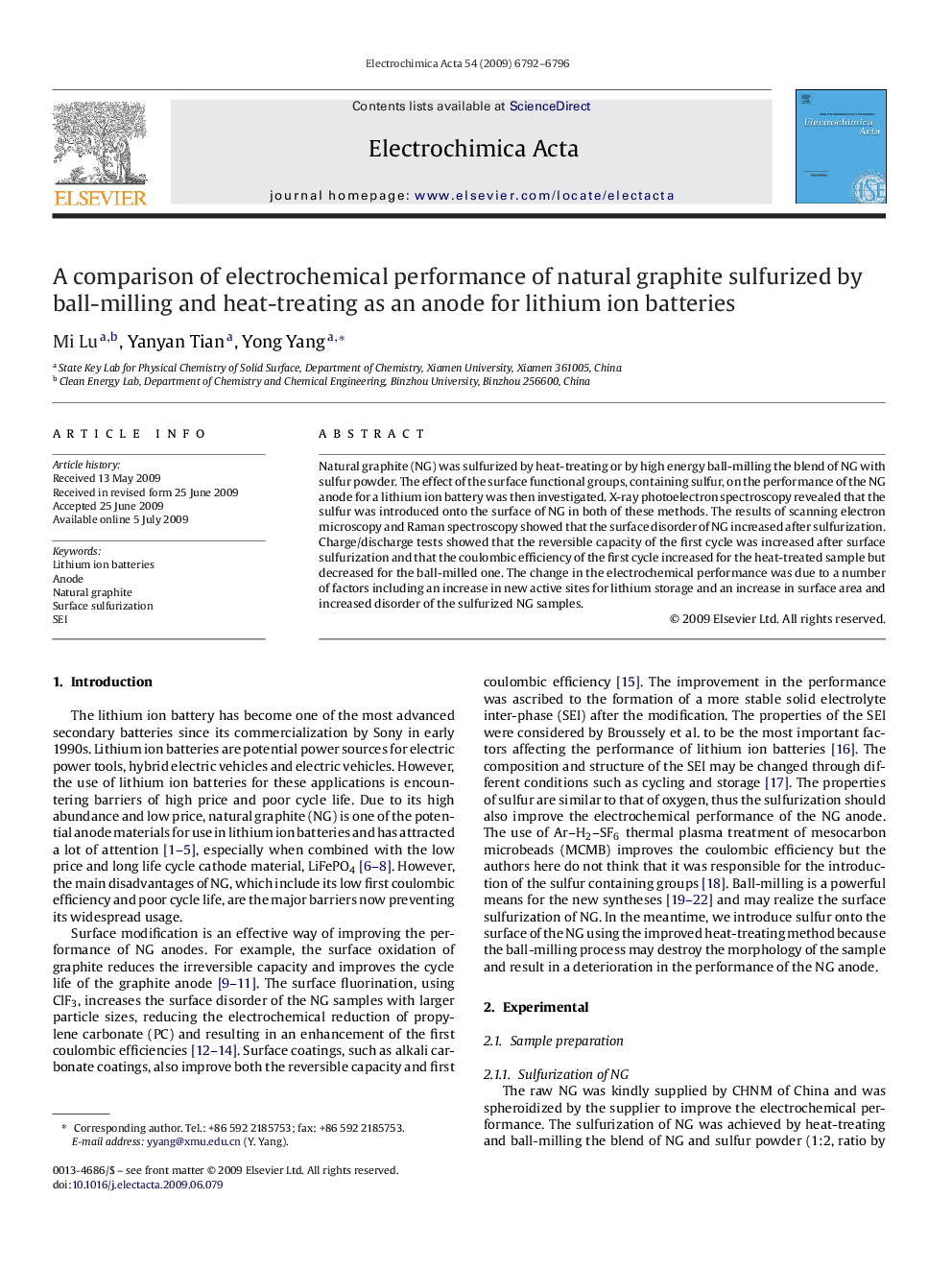| Article ID | Journal | Published Year | Pages | File Type |
|---|---|---|---|---|
| 192121 | Electrochimica Acta | 2009 | 5 Pages |
Natural graphite (NG) was sulfurized by heat-treating or by high energy ball-milling the blend of NG with sulfur powder. The effect of the surface functional groups, containing sulfur, on the performance of the NG anode for a lithium ion battery was then investigated. X-ray photoelectron spectroscopy revealed that the sulfur was introduced onto the surface of NG in both of these methods. The results of scanning electron microscopy and Raman spectroscopy showed that the surface disorder of NG increased after sulfurization. Charge/discharge tests showed that the reversible capacity of the first cycle was increased after surface sulfurization and that the coulombic efficiency of the first cycle increased for the heat-treated sample but decreased for the ball-milled one. The change in the electrochemical performance was due to a number of factors including an increase in new active sites for lithium storage and an increase in surface area and increased disorder of the sulfurized NG samples.
